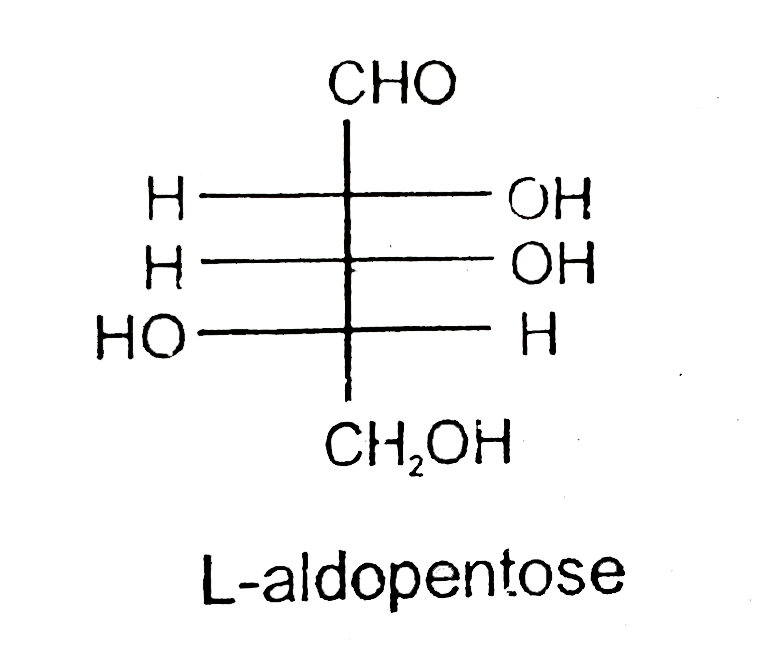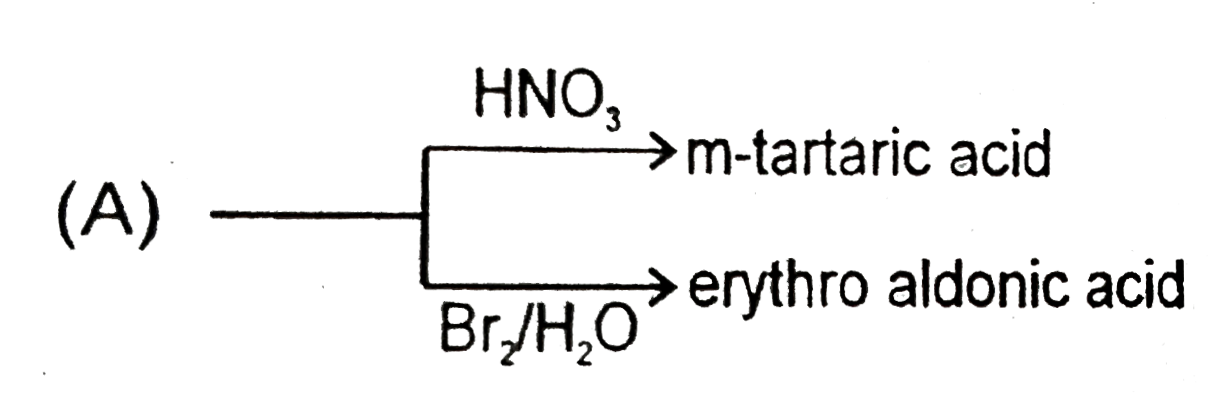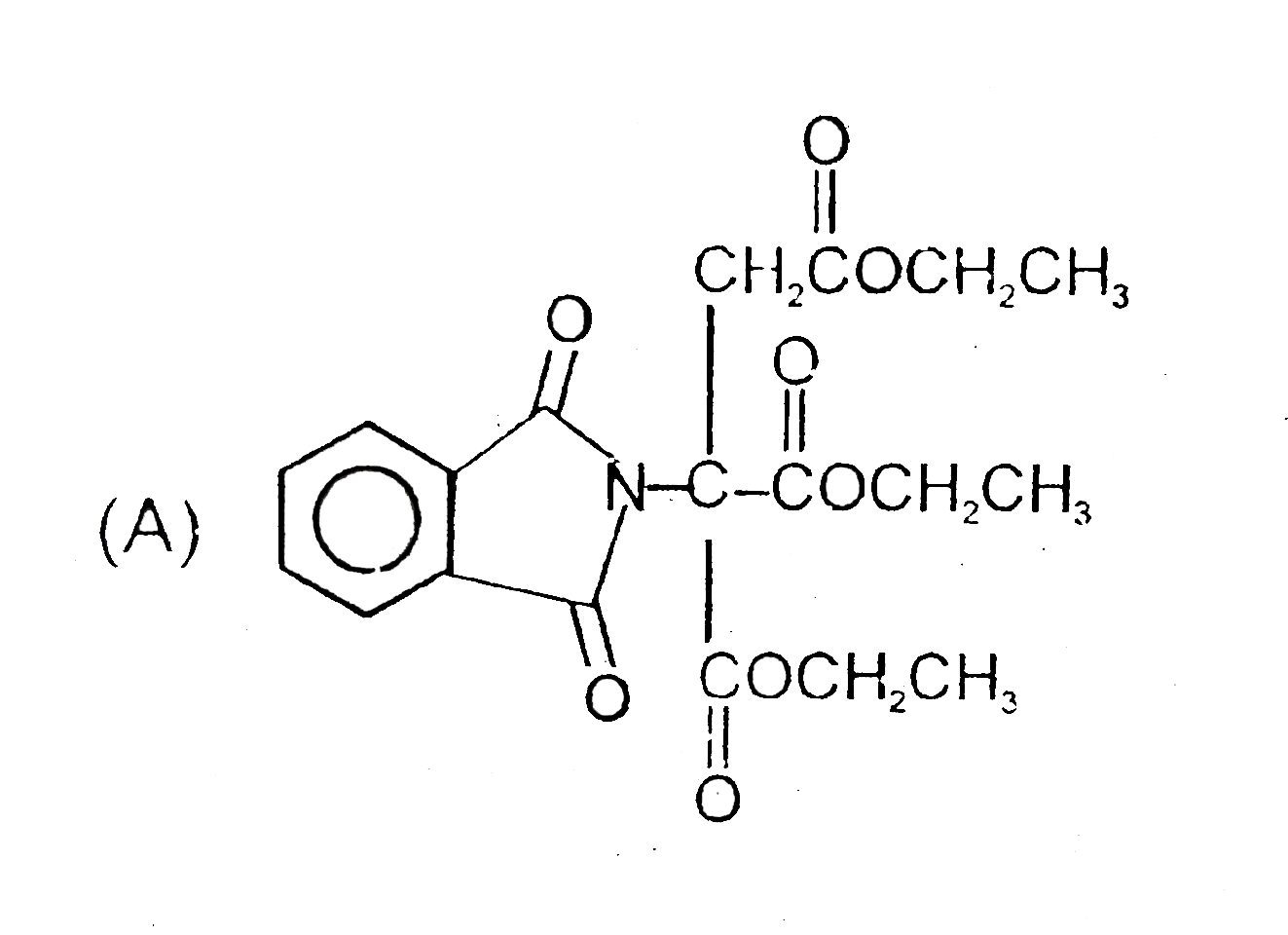Complete Solutions to Ex-2(Subjective)Part-I of chapter BIOMOLECULES of Class 12 book with complete answers and questions
| Class 12 | CHEMISTRY |
| Chapter | BIOMOLECULES |
| RESONANCE | Ex-2(Subjective)Part-I |
| Number Of Questions | 20 |
| Academic Year | 2023-24 |
Classify the following monosaccharides in proper aldoses and ketose.
 02:18View Solution
02:18View SolutionWrite the anomer the epimer, enantiomer and ketose of the following aldose, also mention whether these are `L` sugars or `D` sugars.
 .07:04View Solution
.07:04View SolutionDraw two anomers of D-fructose.
02:06View SolutionThe specific rotation of two glucose anomers are `alpha = + 110^(@)` and `beta = 19^@` and for the constant equilibrium mixtures is `+52.7^@`. Calculate the percentage compositions of the anomers in the equilibrium mixture.
02:19View SolutionConsider an amylose chain of `4000` glucose unit. At how many cleavage require to lower the average length to `400` units.
01:40View Solution
Predict `(A)` :03:27View Solution`A+4HlO_(4) rarr 3HCOOH+HCHO+OHC-COOH`
`B+5HlO_(4) rarr 4HCOOH + 2HCHO`
Identify `A` and `B`.03:41View SolutionOn reduction of a monosaccharide `A(C_(4)H_(8)O_(4))` mixture of two epimeric alcohols `B` & `C` is formed.
(a) Monosaccharide has aldehyde or ketone group ?
(b) Determine the structures of `A,B` and `C`.02:37View SolutionOn which side of neutrality `(pH-7)`, the isoelectric point of the following amino acids will lie ?
(a) `H-underset(underset(NH_(2))(|))(CH)-COOH`
(b) `underset(underset(CH_(2)-CH_(2)-COOH)(|))(H_(2)N-CH-COOH)`
( c) `underset(underset((CH_(2))_(4)-NH_(2))(|))(H_(2)N-CH-COOH)`.01:41View SolutionGlutomic acid `(A)` has isoelectric point `3.22`
(a) What is the most likely structure of the compound at its isoelectric point ?
(b) What is the most likely structure of monosodium glutamate.
`underset(underset(underset((A))(CH_(2))-CH_(2)-COOH)(|))(H_(2)N-CH-COOH)`.02:18View SolutionA polypeptide (Mol. wt `= 360`) formed by glycine (Mol. wt `= 75`) amino acid. How many glycine units are used to form it.
02:06View Solution`0.89 g` of an `alpha-` amino acid `(A)` gave `0.224` lit. `N_(2)` gas at `NTP` on reaction with `HNO_(2)`. In this process an optically active `(B)` is formed. A as well as `B`, gave cyclic compounds `C` and `D` on intermolecular dehydration Identify `A` to `D`.
04:10View SolutionHydrolysis of the following compound `A` in conc. `HCl` for several hours at `372K` gives an amino acid. Identify it. Is it optiacally active ?
 .02:34View Solution
.02:34View SolutionDistinguish between
(a) Glycine and acetamide
(b) `alpha -, beta -` & `gamma -` amino acids.03:48View SolutionAn octapeptide (Mol.wt `= 516 g`) on complete hydrolysis given glycine and alanine (Mol. Mass `= 89 g`). Alanine contributes `41.59 %` to total weight of hydrolysed product. How many number of alanine unit present in octapeptide.
03:52View SolutionGive the amino acid sequence of the following polypeptides using the data given by partial hydrolysis.
(a) `(Ser,Hyp,Pro,Thr) overset(H_(3)O+) rarr Ser, Thr +Thr,Hyp +Pro,Ser`
`(Ala,Arg,Cys,Val,Leu) overset(H_(3)O+) rarr Ala,Cys+Cys,Arg+Arg,Val+Leu,Ala`.02:51View SolutionGlutamic acid has lower isoelectric point while glutamine `H_(2)N-overset(overset(O)(||))(C)-CH_(2)-CH_(2)- underset(underset(NH_(2))(|)) overset(overset(H)(|))(C)-COOH` has higher isoelectric `pH`. Explain ?
01:40View SolutionGive the following conversion acetaldehyde `rarr` alanine.
03:08View SolutionComplete the following reactions
 03:29View Solution
03:29View SolutionWrite the structures of monomers of the following polymers
(a) `[-CH_(2)-underset(underset(Ph)(|)) overset(overset(CH_(3))(|))(C)-CH_(2)-underset(underset(CN)(|))(CH)-]_(n)`
(b) `[-CH_(2)-underset(underset(Cl)(|))overset(overset(Cl)(|))(C)-CH_(2)-underset(underset(Cl)(|))overset(overset(Cl)(|))(C)-]`
( c) `[-CH_(2)-underset(underset(Ph)(|)) overset(overset(CH_(3))(|))(C)-CH_(2)-underset(underset(CN)(|))overset(overset(CH_(3))(|))(C)-]`.03:02View Solution
Ex-2(Subjective)Part-I questions and complete solutions for chapter BIOMOLECULES of PHYSICAL, INORGANIC, AND ORGANIC CHEMISTRY of Class 12
All Exercises from RESONANCE Class 12 CHEMISTRY BIOMOLECULES
- Advanced Level(Part I)
- Advanced Level(Part II)
- Board level
- Ex-1(Assertion/Reasoning)Part-III
- Ex-1(sec-A)Part-I
- Ex-1(sec-A)Part-II
- Ex-1(sec-B)Part-I
- Ex-1(sec-B)Part-II
- Ex-1(sec-C)Part-I
- Ex-1(sec-C)Part-II
- Ex-1(sec-D)Part-II
- Ex-1(sec-E)Part-II
- Ex-2(Comprehension)Part-IV
- Ex-2(More correct)Part-II
- Ex-2(Single correct)Part-II
- Ex-2(Subjective)Part-I
- Ex-3(IIT-JEE)Part-I
- Ex-3(IIT-JEE)Part-II
- Ex-3(IIT-JEE)Part-III
